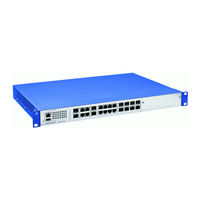Hirschmann GREYHOUND GRS1030 Manuals
Manuals and User Guides for Hirschmann GREYHOUND GRS1030. We have 2 Hirschmann GREYHOUND GRS1030 manuals available for free PDF download: Reference Manual, User Manual
Hirschmann GREYHOUND GRS1030 Reference Manual (619 pages)
Brand: Hirschmann
|
Category: Switch
|
Size: 4 MB
Table of Contents
Advertisement
Hirschmann GREYHOUND GRS1030 User Manual (60 pages)
Brand: Hirschmann
|
Category: Switch
|
Size: 2 MB
Table of Contents
Advertisement
Related Products
- Hirschmann GREYHOUND GRS1142
- Hirschmann GREYHOUND GRS1042
- Hirschmann GREYHOUND GRS1020
- Hirschmann GREYHOUND GRS1120
- Hirschmann GREYHOUND GRS1130
- Hirschmann GRS103 Series
- Hirschmann GRS103-22TX/4C-1HV-2S
- Hirschmann GRS103-22TX/4C-1HV-2A
- Hirschmann GRS103-22TX/4C-2HV-2S
- Hirschmann GRS103-22TX/4C-2HV-2A

